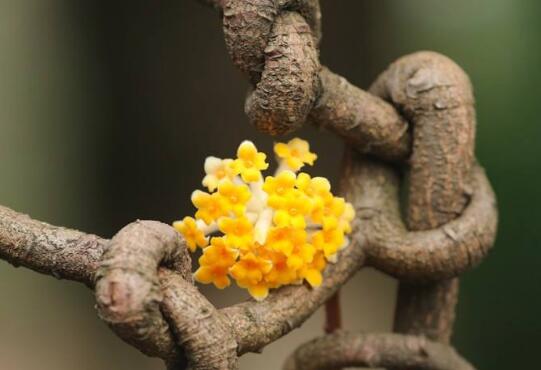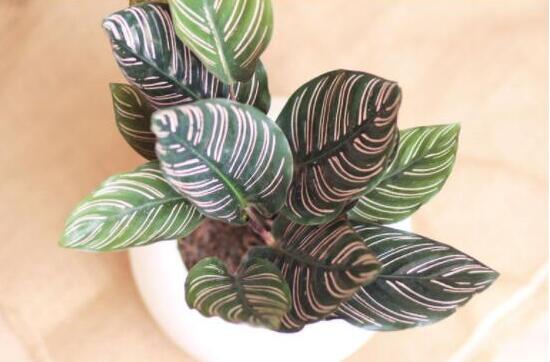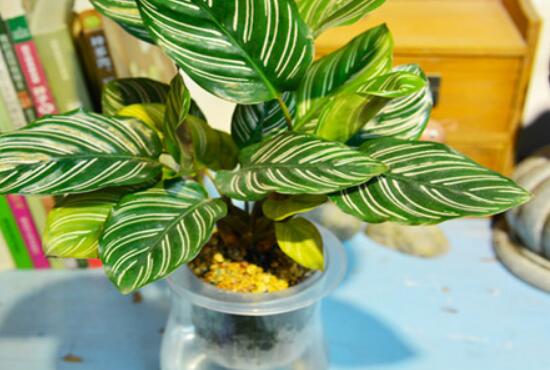How to raise fragrant flowers, culture methods and precautions of fragrant flowers / like half shade / avoid strong light
Fragrant flower is a kind of flower plant produced in Henan Province of China, which is highly ornamental and cultivated in all provinces in the south of the Yangtze River basin. However, if we want to raise it well, there are many things we need to pay attention to. How to raise fragrant flowers? What are the breeding methods and matters needing attention of fragrant flowers? Next, the editor will take you to learn about it.
First, how to raise fragrant flowers and understand their habits

Want to know how to raise fragrant flowers, we must first understand its growth habits, this plant likes to grow in a semi-humid environment, but also like half-shade, so we should not put it in direct sunlight when breeding it, so as not to cause the plant to dry and yellowing for a long time, of course, in addition to daily water and fertilizer management is also very important, details in the following, interested friends can understand.
2. Culture methods and matters needing attention of fragrant flowers
1. Soil
If we want fragrant flowers to thrive, we must first choose a suitable soil, which is a step to lay a good foundation and is very important. Generally speaking, it is best to choose a humus soil with loose, fertile and well-drained soil, which is rich in nutrients and breathable, so that plants can better absorb nutrients.
two。 Temperature
When we cultivate fragrant flowers, the ambient temperature is also what we need to pay attention to, because only if we let it grow at a suitable temperature, it can grow better. The temperature of its growth environment should be kept in a relatively mild range, and it can withstand low temperature in winter, but pay attention to the fact that too cold will delay its flowering.
3. Fertilizer application
Fertilizer is one of the main nutrients in the growth process of fragrant flowers, especially after entering its growing period, its demand for fertilizer is very high. Basically, we need to apply fertilizer once a month, but there is one thing we should pay attention to when applying fertilizer. That is to apply thin fertilizer, the fertilizer concentration should not be too high, if the concentration is too high, it will burn the plant.
4. Moisture content
This kind of plant likes the semi-humid environment, so when we cultivate it, we should water it frequently and keep the soil moist, so that the plant can thrive, but we need to pay attention to control the amount of water, because it is not resistant to waterlogging, so it can not be watered too much, if stagnant water is very easy to cause its roots to rot.
5. Light
Fragrant flowers like the semi-shady growth environment and are not resistant to strong light. If the light is mild in spring and autumn, we can breed them in outdoor sunlight scattering places, and after summer, it is best to move to indoor semi-shade places for breeding, because if the light is too strong, it will burn the plants and cause the leaves to turn yellow and dry.
6. Diseases and insect pests
In the process of cultivating fragrant flowers, if we are not careful enough, it is very easy to let diseases and insect pests enter while they are empty. This kind of problem is very harmful to plants, so we must deal with it in time after it is discovered, because the longer it takes, the more difficult it will be to cure it. As for the specific treatment methods, you can refer to the article on pest control of fragrant flowers, which has a detailed introduction.
How to raise rich bamboo, the culture methods and matters needing attention of rich bamboo
Fugui bamboo is also known as longevity bamboo, green leaf fairy tree, fairy dragon blood tree, it belongs to a kind of tequila family evergreen small trees and sub-shrubby flowers and plants, native to the Canary Islands, Asia, Africa and other tropical regions. It is a kind of plant with high ornamental value, and its moral meaning is very good. It symbolizes prosperity, prosperity and auspiciousness, and is regarded as a kind of fengshui plant. It often appears in people's bedroom, living room, study, office and other indoor places, which occupies a very important position in people's hearts. However, many people also encounter a lot of problems in the process of cultivating rich bamboos. The following editor will introduce to you how to raise rich bamboos, the breeding methods and matters needing attention. How to raise rich bamboo is a kind of evergreen herbaceous plant, it likes to grow in dark and humid environment, and it has very good resistance to shade, waterlogging and fertilizer, especially strong cold resistance. it doesn't need to spend much thought in the process of breeding. Its appearance is very beautiful and its ornamental value is very high. It has the significance of blooming wealth and peace. The culture method of rich bamboo-soil culture 1. Soil: the ability of rich bamboo to adapt to the environment is very good, and it is suitable to grow in clay and sandy soil. It likes to grow best in sandy soil with loose, fertile and well-drained humus. It can also be planted with special plant nutrient soil, rotten leaf soil and river sand. In the process of breeding, the pot is changed every two years, which is conducive to the healthy growth of rich bamboo. two。 Watering: rich bamboo is suitable for growing in the environment of 20-30 degrees Celsius, keep it at 10 degrees Celsius in winter, it is not resistant to low temperature freezing injury. In the process of growth, you need to keep the air master, otherwise the leaves will become dim. You can spray water on the leaves to maintain its humidity, and it can also increase the humidity of the growing environment. 3. Fertilization: the requirements of rich bamboo on the environment are not so strict, especially the requirements of fertilization, but still have a certain amount of topdressing in the process of growth. Use chemical fertilizers and organic fertilizers for liquid fertilization, use a small amount of chemical fertilizers frequently, and need to water some water after fertilizing. 4. Lighting: rich bamboo likes to grow in a warm environment, but avoid high temperature, can not grow in the summer sun, potted culture can be placed under the window and balcony, avoid direct sunlight, can give a certain amount of light, this is conducive to its healthy growth, otherwise the leaves will be dim or golden, there is no good ornamental value. 5. Prevent diseases and insect pests: rich bamboo in the growth process will appear leaf spot, root rot, stem rot and other virus harm, you can use 100 times Bordeaux solution sprayed on the leaves, so it can be prevented. Pests include thrips and shell insects, which can be sprayed with 1000 omethoate and EC, which can help kill insects effectively. The culture method of rich bamboo-aquaculture 1. Water quality: when using water to raise rich bamboo, it can not be directly prevented from being in tap water. First of all, the water is precipitated so as to reduce the chloride in the water, which is beneficial to the normal growth of rich bamboo. two。 Temperature: rich bamboo is cold-resistant, suitable for free growth in a temperature of 20-28 degrees Celsius, but not less than 2-3 degrees Celsius. Freezing injury should be done in winter. Too low temperature will cause rich bamboo to wither and cannot grow normally. 3. Lighting: rich bamboo is shade-tolerant, suitable for growing in a semi-shady environment, and can not be directed in strong light, otherwise it will cause branches and leaves of rich bamboo to turn yellow and grow slowly. 4. Fertilization: rich bamboo is a fertilizer-tolerant plant, changing water every half a month or so, and then fertilizing with potassium dihydrogen phosphate fertilizer, which helps it to have sufficient nutrients to absorb. After rooting, add a small amount of culture medium and compound fertilizer to the water to ensure that the branches grow healthily. Fertilization should not be excessive, otherwise the roots will be burned so that they can not grow normally. Culture methods of Fugui bamboo-matters needing attention 1. If the use of water is the best season from April to September, the survival rate of rich bamboo is very high in this season. two。 When the weather is dry, you can increase the humidity of the growing environment, or spray water on the leaves to make the rich bamboo more stretched and rich. 3. It is best to change the water every half a month, so that bacteria will not accumulate and cause rotting roots. 4. Do not prevent him next to the electrical appliances, there will not be a dry phenomenon, affecting the ornamental value. 5. Water-raised rich bamboo can be farmed with more branches, so the ornamental value will be better, and the ability to purify the air is also very good. Summary: the above is the editor to introduce to you how to raise rich bamboo, as well as the breeding methods and matters needing attention. Hope that more and more people breed luxuriant and rich bamboo and bring good luck back to your home in the middle of life, so that you can live a healthy and happy life. Thank you for your appreciation.
More information about Japanese evening cherry pictures, fragrant pictures, Caragana pictures, safflower onion orchids, what are the use of Schima superba pictures
The culture method of fragrant fruit
The culture method of fragrant fruit
The basic information of fragrance
Scientific name: Edgeworthia chrysantha alias: trigeminal wood, snowflake tree, termite tree, yellow Ruixiang, gold belt, knot flower, snow bloom.
Families and genera: Daphneaceae, Genus.
Deciduous shrub, plant height up to 1-2 meters. The branches are sparse, stout, branching once a year, each branch can be divided into 3 branchlets in trigeminal shape, brownish red, with obvious lenticels and protruding leaf scars, and young branches with yellowish or gray puberulent pilose. Leaves alternate, clustered at the top of branches, 6-20 cm long and 2-5 cm wide, long elliptic or elliptic-lanceolate, apex pointed, entire, surface sparsely pilose. From February to April, the first leaves bloomed, the flowers were yellow and fragrant, and 40 ~ 50 flowers gathered at the top to form a false head, the total stalk was thick and short.
The posture of the fragrant plant is clear and elegant, the branches are soft and easy to tie a knot, which is very strange and interesting; the early spring leaves blossom, the flowers bloom in clusters, and the fragrance is overflowing; and it is easy to multiply, grow sturdy, adaptable and easy to manage. Often planted in the garden, can also be potted to watch the shape of knots and flowers.
[incense propagation] ramet, cuttage, striping, etc.
(1) ramet: the sprouting ability of incense is very strong, and it often sprouts into clumps next to the mother plant. It can be carried out after defoliation in autumn to before sprouting in spring, and the sturdy tillering seedlings next to the mother plant can be cut off from the joint and planted separately, which is easy to survive.
(2) Cuttage: before sprouting in early spring. Select sturdy annual branches, cut the middle and lower part of the cuttings with a growth of 10 cm to 15 cm, insert the cuttings into the matrix 1 ~ 2, keep them in a semi-shady and humid environment after insertion, and root in about 50 days, which is very easy to survive. Semi-mature wood cuttings can also be used in May and June.
(3) pressing: before and after sprouting. After burying the branches near the soil surface, the branches are buried in the soil, only the tip of the branches are exposed, and then keep the matrix moist. They can take root in 40-50 days, and can be cut off and cultivated in the following spring.
[key points of incense cultivation]
(1) temperature: temperate tree species, like warm climate, the most suitable temperature for growth is 20 ~ 25 °C. However, when the low temperature is less than-20 °C, but when the temperature is below-10 °C, the flowering will be delayed to March to April. If its New Year's Day or spring flowering is needed, the deciduous plants can be moved to the greenhouse to promote bud development and flowering.
(2) Light: not very sensitive to light intensity, resistant to semi-overcast, but also resistant to sunlight. However, when the sun is strong in summer and autumn, the pot plant should be placed in a semi-shaded place, especially to prevent the western sun from shining, which will make the leaves yellow and reduce flowering. It is best to give sufficient sunlight at other times, especially during flowering, and the fragrance of the flowers will be weakened when the flowers are overcast.
(3) watering: because of the fleshy quality of the root system, water collapse is avoided, and rotten roots are easy to be caused by poor drainage. Should not be too dry, otherwise the leaves turn yellow and fall off. Watering during the growth period should grasp the principle of "no dry, no watering", and keep the basin soil moist but not too dry and not too wet. When the plant goes into dormancy after falling leaves in autumn, the water should be controlled to keep the basin soil relatively dry.
(4) fertilization: fertilizer should be applied once a month in the growing season. Nitrogen should be the main fertilizer after flowering to promote the growth of branches and leaves. However, fertilization should not be more, otherwise it will lead to the growth of branches and leaves and affect the sense of beauty. After July, we should increase the application of phosphorus and potassium fertilizer to promote flower buds to divide flowers, so that the future flowering is large and dense.
(5) styling and pruning: because the branches are soft and tough, they can be bent and knotted without breaking, so they can be knotted on the trunk and twigs according to artistic conception. Knot modeling should be carried out from after falling leaves to before sprouting. Old and weak branches should be cut short after flowering, and 1 or 2 new shoots will sprout after pruning to maintain the fullness of the tree. At ordinary times, the tillering branches should be cut off at any time to maintain a beautiful plant shape. Usually, the height of the plant can be controlled by knotting and twisting the branches.
(6) turn the basin: because of the rapid growth, the basin should be turned once a year. Turning the pot should be carried out after the flower fades, so as not to affect the flowering. The requirement of soil is not strict, but the slightly acidic sandy loam with loose, fertile and good drainage is better, saline-alkali soil is avoided, and the matrix can be prepared with rotten leaf soil, garden soil and coarse sand. There should be more drainage layers at the bottom of the basin to prevent the soil from getting too wet. Old plants that have been cultivated for many years will grow old and grow weaker, so consideration should be given to elimination and renewal.
(7) Prevention and control of diseases and insect pests: there are few diseases and insect pests, but they are easy to be harmed by shell insects when the ventilation is poor. Others are leaf shrinking trees, white silk disease and aphids, planthoppers, diamondback moths and other diseases and insect pests.
[common problems in incense cultivation]
The causes of common problems are wilting, yellowing and shedding of leaves during the growing period, ① strong light exposure, excessive ② potted soil, excessive wet ⑤ potted soil, rotting roots, and ④ application of concentrated fertilizer. The reason why the flowers are not fragrant is usually too shady.
Less flowering ①, too strong or overcast sunlight, too much nitrogen fertilizer during flower bud differentiation in ②, and poor water management in ⑤.
- Prev

How to water double-line taro? double-line taro is watered once a few days / three times a day in summer
Double-line taro this kind of plant, many flower friends should know, it is the main ornamental leaf, its leaves are broad, the leaf color is rich, it is very ornamental when raised indoors. However, in indoor breeding, if you want double-line taro to look good, watering is a very key link, then how to water double-line taro? Double-line taro is watered once a few days.
- Next

Can double-line taro be cultured in water? the culture method of double-line taro in water culture / change the water once every 2 days.
As a beautiful foliage plant, double-line taro has many functions, it can be both ornamental and medicinal, and is deeply loved by flower friends. However, compared to soil culture, many flower friends prefer hydroponic culture, can double-line taro be hydroponic? If you can, how can the double-line taro be cultured in water?
Related
- Fuxing push coffee new agricultural production and marketing class: lack of small-scale processing plants
- Jujube rice field leisure farm deep ploughing Yilan for five years to create a space for organic food and play
- Nongyu Farm-A trial of organic papaya for brave women with advanced technology
- Four points for attention in the prevention and control of diseases and insect pests of edible fungi
- How to add nutrient solution to Edible Fungi
- Is there any good way to control edible fungus mites?
- Open Inoculation Technology of Edible Fungi
- Is there any clever way to use fertilizer for edible fungus in winter?
- What agents are used to kill the pathogens of edible fungi in the mushroom shed?
- Rapid drying of Edible Fungi

